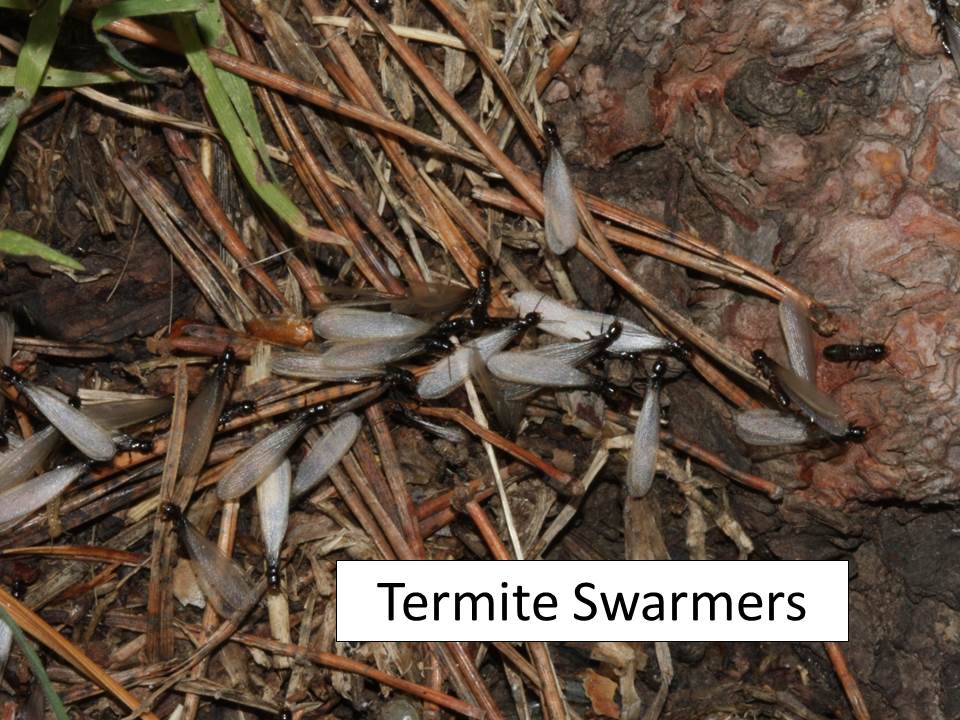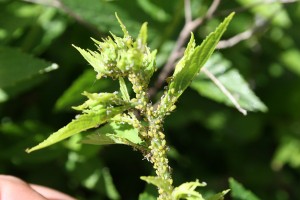–by Dr. Jeff Whitworth and Dr. Holly Schwarting
Termite and ant colonies have been very active over the past week or so and are producing reproductives or ‘swarmers’. We have seen flying/fluttering individuals every place we have stopped throughout north central Kansas, as long as it was between about 10am and 4pm. Thus, we have received many calls regarding the differences between reproductive ants versus reproductive termites, in both cases often just referred to as ‘swarmers’. This swarming behavior seems to be initiated about the same time each year for both ants and termites as the same type of warm, wet weather evidently triggers both. Thus, it is imperative to be able to distinguish the two as they do very different kinds of damage and consequently require different management plans.
Termite reproductives, or swarmers, are dark brown to black, with transparent or translucent wings of equal size, and the dark body is cigar shaped, having no noticeable body divisions or waist. Termite antennae are straight and lack a club on the end. Ant reproductives, or swarmers, are also dark brown to black with transparent or translucent wings, but the fore or front wings are a little longer than the bottom or back wings. Ant antennae are elbowed, coming out perpendicular to the head then bending forward at a 90 degree angle.
For more information on ant identification, biology, and control, please visit: https://www.bookstore.ksre.ksu.edu/pubs/MF2887.pdf
For more information on termite identification, biology, and control, please visit: http://www.bookstore.ksre.ksu.edu/pubs/mf722.pdf



